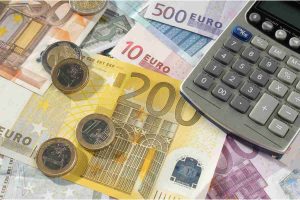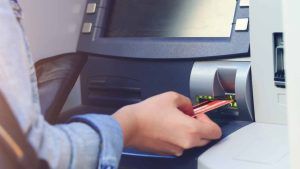Other currencies held in reserve include the euro, Japanese yen, Swiss franc and pound sterling. The dollar, while still the most widely held reserve currency, has seen increased competition from the euro. The euro has grown from slightly less than an 18% share of allocated reserves, when it was introduced into the financial markets in 1999, to 24% at the end of 2011. In such a global economy, where countries ship commodities and goods at such a frenetic pace, the fear of markets seizing up due to monetary constraints is not likely to diminish in the coming years. The recent financial crisis has increased the pressure on the dollar, especially in light of public debt prospects and political brinksmanship. Countries without reserve currency status fear that their fates are tied to macroeconomic and political decisions that are outside of their control.
In 1973, President Nixon’s New Economic Policy brought an end to the Bretton Woods system of fixed exchange rates. It also decoupled the U.S. dollar from the value of gold, which opened up the world to the rise of new reserve currencies. Tech evangelists dream of a world where cryptocurrencies such as Bitcoin replace government-backed currencies.
- The first U.S. dollars were printed in 1914, a year after the Federal Reserve Act was established.
- The announcement made by the IMF coincides with a period that many countries are witnessing their economies deteriorating and have been struggling to maintain their financial stability.
- “China does not have the intention or the capacity to dethrone the dollar,” says CFR’s Zongyuan Zoe Liu.
The euro, introduced in 1999, is the second most commonly held reserve currency in the world. According to the International Monetary Fund (IMF), which is charged with promoting global growth and trade, central banks hold more than $6.7 trillion in dollar reserves versus 2.2 trillion in euros as of Q4 2019. The world’s largest current foreign exchange reserve holder is China, a country holding more than $3 trillion of its assets in a foreign currency.
Global currency reserves
The reality is that currency changes are just one component of a complicated macroeconomic backdrop, and we believe the migration toward a global multicurrency reserves position will ultimately prove to be just as boring as it sounds. World reserve currency (WRC) is an form of currency which is the main currency in international transactions. The US dollar has been the world’s most frequently used currency since it became the first reserve currency in the world in 1879. The Federal Reserve Act of 1913 created the Federal Reserve Bank to respond to the unreliability and instability of a currency system that was previously based on banknotes issued by individual banks.
The dollar’s centrality to the system of global payments also increases the power of U.S. financial sanctions. Almost all trade done in U.S. dollars, even trade among other countries, can be subject to U.S. sanctions, because they are handled by so-called correspondent banks with accounts at the Federal Reserve. By cutting off the ability to mercatox exchange reviews transact in dollars, the United States can make it difficult for those it blacklists to do business. For example, in the wake of the Russian invasion of Ukraine in 2022, unprecedented U.S. sanctions cut Russia off from the dollar, freezing $300 billion in Russian central bank assets and triggering a default on the country’s sovereign debt.
No central bank has an easy task, but setting a coherent monetary policy for that mix of commodity importers and exporters is a Herculean one. We wish them luck in deciding between rate cuts and hikes if oil prices fall, hurting Russia while causing potential booms in India exness company review and China. The world is shifting away from the US Dollar as their world reserve currency. In fact, the International Monetary Fund (IMF) recently announced that it would no longer use its US Dollar as its primary benchmark for assessing countries’ economic conditions.
Understanding Reserve Currency
Most of these reserves are held in the U.S. dollar since it is the most traded currency in the world. It is not uncommon for the foreign exchange reserves to be made up of the British pound (GBP), the euro (EUR), the Chinese yuan (CNY) or the Japanese yen (JPY) as well. The reserve status is bitfinex vs bitmex based on the size and strength of the U.S. economy and the dominance of the U.S. financial markets. In 2022, global central banks held over half of their reserves in U.S. dollars. Countries also keep an eye on major reserve currencies to ensure that their holdings aren’t adversely affected.
The Japanese Yen is utilized by a handful of countries including Japan and China. However, over a longer horizon there is more risk of a challenge to the dollar’s international status, and some recent developments have the potential to boost the international usage of other currencies. Devaluation is monetary policy tool used by governments to reduce the value of a country’s… The first documented use of paper currency in the U.S. dates back to 1690, when colonial notes were issued by the Massachusetts Bay Colony.
Bonds are an important asset class in financial markets that are often used in a diversified… The government established the Office of the Comptroller of the Currency (OCC) and the National Currency Bureau in 1863. Centralized printing began at the Bureau of Engraving and Printing in 1869. Treasury began issuing the nation’s legal tender in 1890, more than a decade before the creation of the Federal Reserve.
Start a global, multi-asset portfolio with an award-winning platform
But it remains the world’s reserve currency, and the most redeemable currency for global commerce and transactions, based largely on the size and strength of the U.S. economy and the dominance of the U.S. financial markets. A reserve currency is a large quantity of currency maintained by central banks and other major financial institutions to prepare for investments, transactions, and international debt obligations, or to influence their domestic exchange rate. A large percentage of commodities, such as gold and oil, are priced in the reserve currency, causing other countries to hold this currency to pay for these goods. It is a common practice in countries around the world for a central bank to hold a significant amount of reserves in its foreign exchange.
Conversely, countries can intervene to stop their currencies from appreciating and make their exports cheaper. Foreign exchange reserves can include banknotes, deposits, bonds, treasury bills and other government securities. These assets serve many purposes but are most significantly held to ensure that a central government agency has backup funds if their national currency rapidly devalues or becomes entirely insolvent.
By the 1960s, however, the United States did not have enough gold to cover the dollars in circulation outside the United States, leading to fears of a run that could wipe out U.S. gold reserves. Following failed efforts to save the system, President Richard Nixon suspended the dollar’s convertibility to gold in August 1971, marking the beginning of the end of the Bretton Woods exchange rate system. The Smithsonian Agreement, struck a few months later by ten leading developed countries, attempted to salvage the system by devaluing the dollar and allowing exchange rates to fluctuate more, but it was short-lived. By 1973, the current system of mostly floating exchange rates was in place.
Not to mention that the eurozone would almost certainly look to limit inflows from countries that had just weaponized bond markets. The more likely path for de-dollarization in reserves is through redirecting the flows of newly created reserves. The greenback is now about 58 percent of global reserves compared to nearly 73 percent in 2001.






